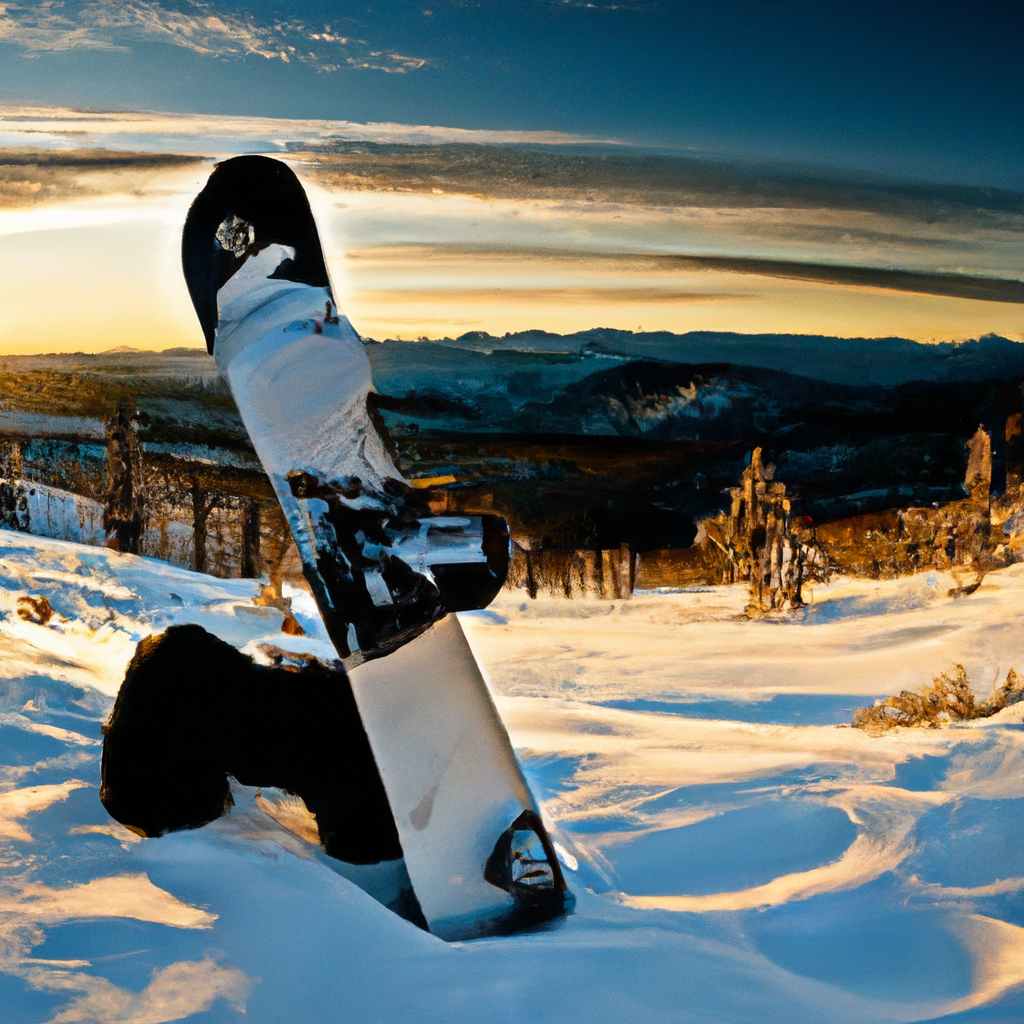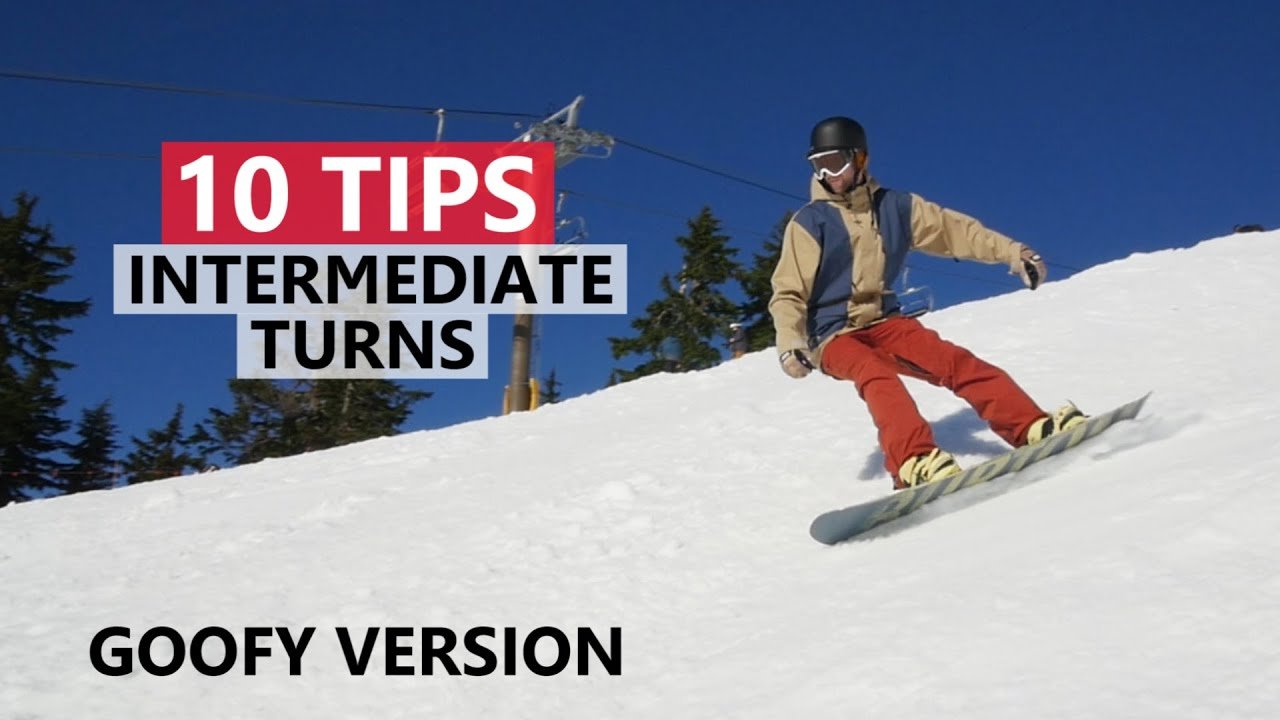
10 Tips to Improve Intermediate Snowboard Turns – Goofy Version
Introducing “10 Tips to Improve Intermediate Snowboard Turns – Goofy Version,” a video by SnowboardProCamp. In this video, Kevin shares his top 10 tips for improving snowboard turns, allowing riders to be more aggressive and confident on steep terrain. Starting from the bottom and working his way to the top, Kevin provides these tips in the same order he watches someone ride. From using ankles to get the board on edge early in the turn, to utilizing knees for pressure control and steering, and engaging the core for a coordinated upper and lower body movement, these tips will help intermediate riders enhance their technique. Kevin advises riders to anticipate each turn with their front arm and shoulder, count in their head to maintain even and coordinated turns, and adjust speed and size based on the terrain. With these 10 tips, riders can elevate their snowboarding skills and ride with more confidence. So give this video a thumbs up if you found it helpful, and check out the freeride snowboarding playlist for more tips. Happy shredding!
Tip 1: Use your ankles to get your board on edge early
When it comes to improving intermediate snowboard turns, one of the key tips is to use your ankles to get your board on edge early. By doing so, you’ll be able to have better control over your speed and steer more effectively into the next turn.
To start, spray snow to control your speed. When you get your board on edge, you’ll create more friction between your board and the snow, allowing you to slow down and adjust your speed as needed. This can be particularly helpful when riding on steeper terrains where maintaining a controlled speed is crucial.
Another important aspect is to steer quickly into the next turn. By using your ankles to shift your weight and initiate the turn, you’ll be able to smoothly transition from one turn to the next. This will help you maintain the momentum and flow of your ride, allowing for a more dynamic and enjoyable snowboarding experience.
Tip 2: Use your knees to alternate pressure on your board
Using your knees effectively is another crucial tip for improving intermediate snowboard turns. By doing so, you’ll be able to apply the right amount of pressure on different parts of your board and enhance your overall control.
To start the turn, pressure your front foot. By doing so, you’ll initiate the movement and shift your weight in the desired direction. This will allow you to smoothly start the turn, giving you better control over your board.
Once you’re in the turn, take pressure off your back foot to bring your tail around. This action will help you rotate your board and navigate the turn more effectively. By releasing the pressure on your back foot, you’ll encourage the back end of your board to follow the desired path, resulting in a smoother and more controlled turn.
To control your speed, pressure your back foot more. By doing so, you’ll create more resistance between your board and the snow, allowing you to slow down and spray snow effectively. This technique can be particularly handy when riding on steeper slopes where maintaining a controlled speed is important.
Tip 3: Use your knees to aggressively steer your board
When it comes to steering your board more aggressively, using your knees can make a significant difference. By utilizing proper knee movement and positioning, you’ll be able to achieve sharper and more precise turns.
To begin with, steer in the direction you point your knees. By consciously aligning your knees with the desired direction, you’ll be able to initiate the turn more effectively. This technique allows for more fluid and controlled movements, resulting in improved overall performance.
Using a narrower stance can make knee steering easier. By bringing your knees closer together, you’ll create a more stable and responsive position. This will provide you with better control over your board and make it easier to adjust your movements as needed.
For a toe turn, turn your knees in. By rotating your knees inward, you’ll promote better balance and stability during the turn. This technique helps you maintain control and precision throughout the entire maneuver.
Conversely, for a heel turn, turn your knees out. This positioning allows for a smoother weight transition and enables better control over your board. By utilizing this technique, you’ll be able to steer more effectively and execute your turns with confidence.

Tip 4: Use your knees to absorb pressure during turns
In addition to steering, your knees play a vital role in absorbing pressure during turns. By effectively utilizing your knee movement and adjusting your stance, you’ll be able to navigate turns more smoothly and maintain better control.
As you go around a turn, it’s important to bend your knees more. By doing so, you’ll absorb the pressure that builds up on your board. This technique allows for a more stable and controlled ride, minimizing the impact of uneven terrain and maximizing your overall performance.
On the other hand, when changing edges, it’s beneficial to stand up taller. By straightening your legs slightly, you’ll effectively shift your weight and prepare for the next turn. This action allows for a seamless transition between edges and promotes a smooth and continuous riding experience.
Tip 5: Use your hips to keep weight centered
To maintain balance and stability during turns, it’s crucial to utilize your hips effectively. By focusing on the movement and positioning of your hips, you’ll be able to keep your weight centered and enhance your overall performance.
During a toe turn, it’s important to push your hips forward. By doing so, you’ll maintain a balanced weight distribution over your board. This technique helps you stay in control and allows for better maneuverability throughout the turn.
On the other hand, during a heel turn, it’s beneficial to bend at the hips, as if you were sitting in a chair. This action ensures that your weight remains centered over your board and prevents excessive weight distribution over the heel edge. By keeping your body aligned and balanced, you’ll have better control and stability during the turn.
It’s important to avoid having too much weight over the heel edge. By maintaining a balanced weight distribution and utilizing your hips effectively, you’ll be able to maintain better control and reduce the risk of sliding out.
Tip 6: Engage your core to coordinate upper and lower body
Engaging your core is crucial for coordinating your upper and lower body movements. By effectively utilizing your core muscles, you’ll be able to steer your board with both your upper and lower body, resulting in smoother and more controlled turns.
To achieve this coordination, it’s important to keep your core stiff. By keeping your abdominal and back muscles engaged, you’ll have better control over your body movements. This ensures that your upper and lower body work together seamlessly, maximizing your performance on the snowboard.
By engaging your core, you’ll be able to steer your board more effectively and execute turns with precision. This technique promotes better balance and stability, allowing you to navigate various terrains with confidence.
Tip 7: Anticipate each turn with your front arm and shoulder
Anticipating each turn is key to maintaining control and flow in your snowboarding. By effectively utilizing your front arm and shoulder, you’ll be able to initiate and guide your turns more smoothly.
As you approach the end of a heel turn, start to anticipate the next turn by moving your front arm and shoulder toward your toe edge. By doing so, you’ll initiate the movement and signal to your body that a turn is coming. This action helps maintain a natural flow and rhythm, allowing for more fluid and controlled turns.
By starting the turn with your upper body, your lower body will naturally follow. This coordination ensures that your entire body is aligned and engaged, resulting in more effective turns.
Your back hand also plays a role in steering and balance during a toe turn. Keeping your back hand over the tail of your snowboard helps you steer faster on steeper runs. Additionally, it allows for better balance and stability, promoting overall control and confidence.
Tip 8: Use your back hand to steer faster and stay balanced
Your back hand can be a valuable asset when it comes to steering faster and maintaining balance on your snowboard. By utilizing proper hand placement and positioning, you’ll be able to enhance your overall performance.
Keep your back hand over the tail of your snowboard. This technique allows for better control and steering, especially on steeper runs. By using your hand to guide and navigate the turn, you’ll be able to maintain higher speeds and execute sharper turns.
Keeping your body square to the board is also crucial. By aligning your body with your snowboard, you’ll have better stability and control. This positioning allows you to make precise movements and maintain balance throughout the turn.
Tip 9: Count in your head to coordinate movements
Counting in your head can be a helpful technique to coordinate your movements and maintain a consistent rhythm during turns. By utilizing counting, you’ll be able to execute your turns more evenly and adjust your speed and size as needed.
When riding, count “2, 3” to keep your turns even and coordinated. This counting technique ensures that your turns are balanced and that you maintain control over your movements. By maintaining a steady rhythm, you’ll be able to navigate various terrains with confidence and fluidity.
For bigger turns on mellow terrain, count lower, and for smaller turns on steep terrain, count faster. Adjusting the speed of your count allows you to make precise and controlled turns, tailoring your movements to the specific conditions of the slope.
Once you establish a rhythm and feel comfortable, you can stop counting and look two or three turns ahead. By anticipating the terrain ahead, you’ll be able to adjust your speed and size of turns accordingly. This technique allows for better adaptability and ensures a smoother and more enjoyable ride.
Conclusion
By utilizing these nine tips, you’ll be able to improve your intermediate snowboard turns and ride with more confidence and control. Using your ankles, knees, hips, core, and arms effectively will enhance your overall performance and allow you to navigate various terrains with ease.
Remember to focus on each aspect of your body movement and positioning, from getting your board on edge early to coordinating your upper and lower body. By practicing and implementing these techniques, you’ll notice a significant improvement in your snowboarding skills.
If you want feedback on your turns, don’t hesitate to connect with the instructor on Instagram. Film a 15-second video of your intermediate snowboard turns and tag the instructor with the hashtag #mysnowboardturns. Getting feedback and guidance from an expert can further enhance your progress and lead to even better results.
So, put these tips into practice, hit the slopes, and enjoy the thrill of improved intermediate snowboard turns. Happy riding!
